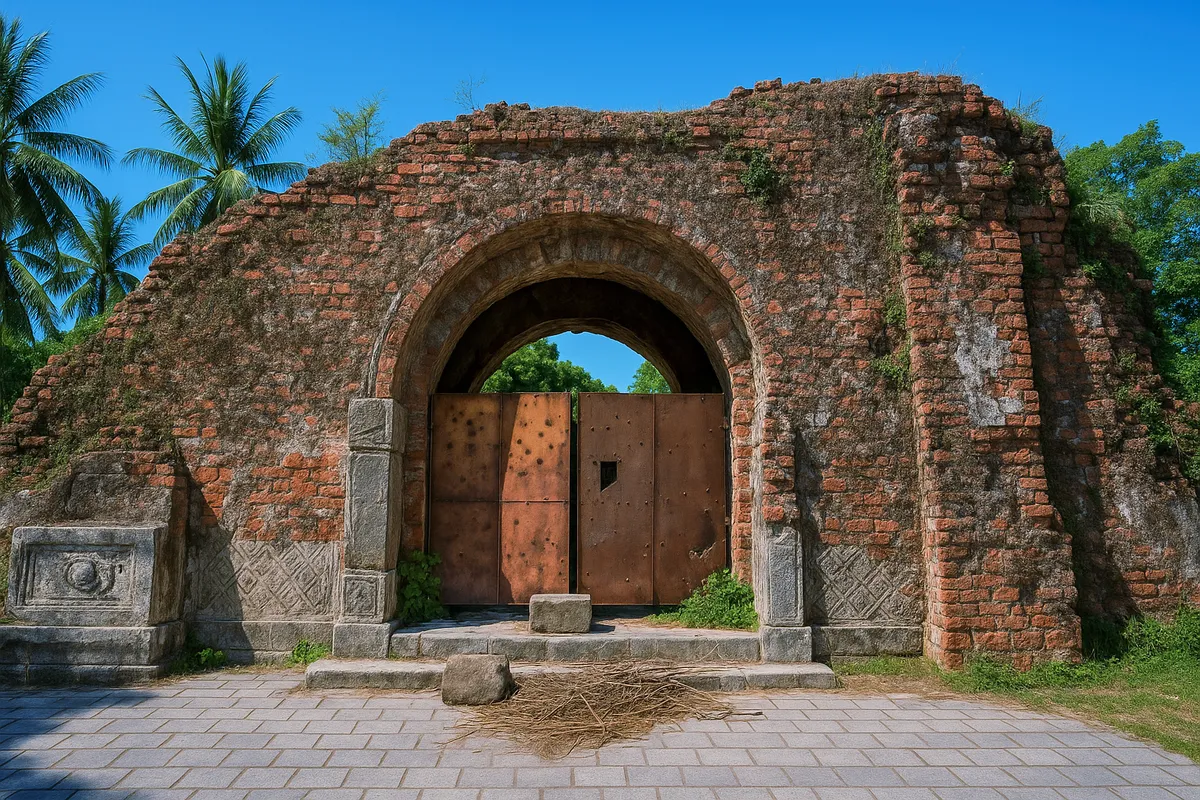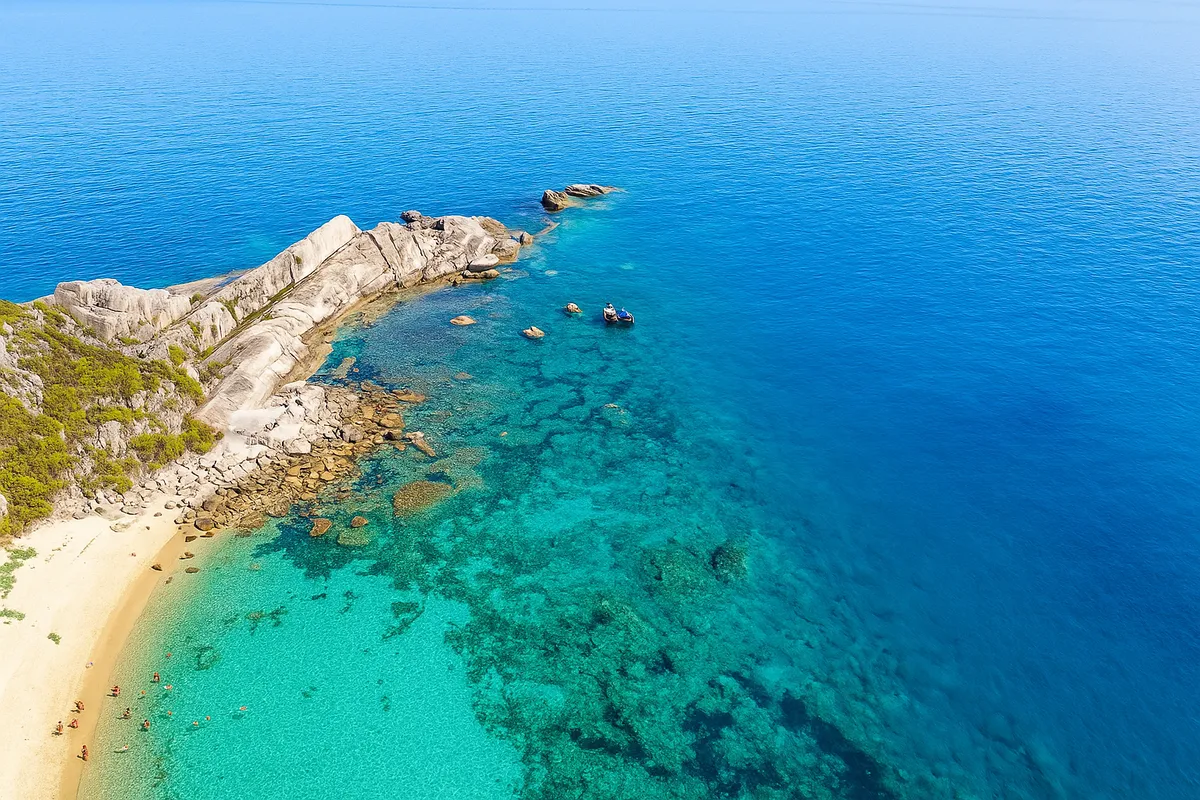Quang Tri Citadel and its silent scars
- Sunday, May 04, 2025, 11:10 (GMT+7)
Quang Tri Citadel and its silent scars
Quang Tri Citadel is not just a relic, it is a geological layer of emotion. This place was not built to tell stories, yet it holds tales so powerful that silence becomes impossible once they are heard. In the heart of Vietnam’s central land, where hot winds sweep across sunburnt hills and the earth seems forever scorched, stands a square-shaped fortress that feels timeless. It is not grand or towering, covering just over two hectares, but it was once the center of a summer that changed history.
The aged red bricks are not just weathered by time and moss but are stained with the legacy of one of the fiercest artillery battles of the twentieth century. People often speak of the 81 days and nights like an epic, but few realize that each brick carries a date, as if time itself had to approve the memories stored here. Built in the early nineteenth century during the reign of Emperor Gia Long, the citadel was originally made of earth. It was later reinforced with fired bricks under Emperor Minh Mang, featuring four gates facing the cardinal directions and surrounded by moats. But strangely, what lasts longest here is not stone or brick, but a heavy air filled with unspoken remnants of the past.
Someone once stood at the center of the citadel and said, "How can such a small place feel so heavy?" The weight was not physical. It came from the layers of sound that never fade, the echo of more than three hundred shells falling every day like a storm of fire. The weight came from the open graves beneath the sky, where soldiers fell without knowing if their names would ever be spoken again. Visitors who come after the war do not look for bones. They come to rebuild the shape of history, where fragments of bodies and pieces of uniform quietly fill the space between bricks.
With just a bow of the head, one can cross from the present into the life and death moment of 1972. It does not require much imagination because everything here is real to the bone. The chill is not from fear but from deep inside the chest when one first stands in a place where memory speaks without words. Artillery scars still mark the outer walls. Beneath the feet, stone tiles bear witness in silence. Some stones are stacked without any cement but have remained for centuries, as if they chose to stay to keep the flow of memory intact.
At the heart of the citadel stands a memorial. It is not tall or decorated, just a stone base engraved with a poem called The Ferry to Thach Han and lines of gratitude. From above, it appears as a small heart at the center of a square body. The citadel looks like a torn heart sewn back together by memory. Standing there, one can see the four gates opening to four directions like unfinished farewells. The southern gate leads to the Thach Han River, once turned muddy red by bombs and blood, where soldiers swam across in moonless nights carrying vital messages. The northern gate leads to the cemetery, where countless unnamed graves lie like fields of stillness. The other two gates, east and west, seem to open into quiet voids where people walk softly as if not to disturb time.
There is a lesser known detail. On still windless days, if one stands long enough at the center, a strange chorus begins. The soft rustle of dry leaves, a faint hiss through wall cracks, a whisper of wind passing through bullet holes. No one can say exactly what it is, but all agree that in this citadel, even silence becomes a language.
In the courtyard, there stands an old frangipani tree that was once scorched by napalm. The bark is damaged, the trunk is split, yet every season its leaves return in full green. People no longer call it a frangipani. It is now known as the memory tree, because of how it challenges the meaning of death. Its leaves create a quiet shadow where visitors often stop, gently placing a hand on its trunk, like a silent handshake with those who never left.
Beneath this tree, it is common to see young people sitting quietly for hours. Not to take pictures, not to check in, but just to breathe. Even the air here feels different, as if it holds a thousand stories waiting to be told.
From the sky, the architecture may not seem impressive. But every element is a precise strategy of ancient defense. The walls, moats, mounds and gates form a careful harmony between Eastern tradition and military practicality. In an era obsessed with visual tourism, what does not try to stand out is often what leaves the deepest impression.
For decades, an unspoken tradition has quietly unfolded here. It is not in guidebooks, not part of any official itinerary. On memorial days, people come and lay white flowers on the ground or gently trace a circle on the walls with fingers wet from tears. No one tells them to do this. No explanation is needed. It is a personal act of remembrance found only here. The tears dry quickly, but the touch of stone stays forever in memory.
Quang Tri Citadel needs no artificial lights or reconstructed scenes. It lives in rough fragments of memory, unhealed cracks and empty spaces that cannot be filled. Its very imperfections are what make it special to young people today, those searching for something truly honest, truly deep and truly unforgettable.
To visit the citadel is not simply a tour. It is a journey into the heart of history. And with every step on its brick paths, one walks into a space where past and present meet, where humanity connects with something far greater than time and memory.

 CHECKIN.VN
CHECKIN.VN








Share on